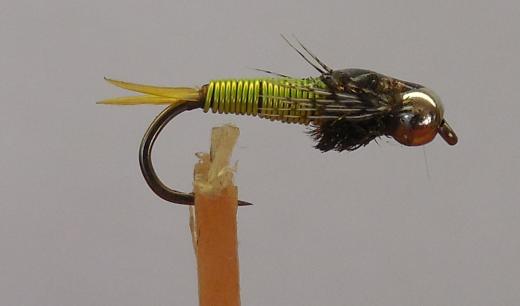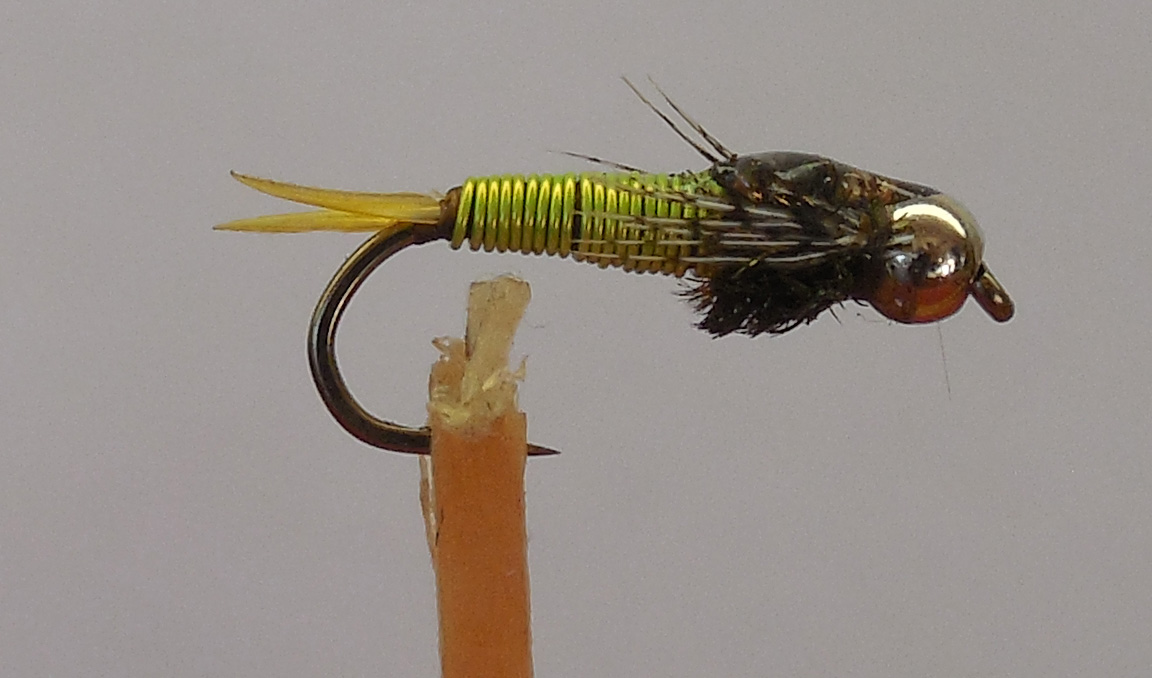The Trout Line Newsletter - May 18, 2020
THE TROUT LINE
May 18, 2020
Welcome to The Trout Line Newsletter! This is our Tualatin Valley Trout Unlimited Chapter newsletter that will be coming out twice a month on the 1st and 3rd Mondays of the month.
Western Rivers Conservancy Web Presentation
Thank you, Jim Cox, from Western Rivers Conservancy for putting on a great web presentation. If you missed the presentation Jim has provided a link and the password so you can view the presentation.
Here is the link for the presentation click here and the password is 1a%B2oz%
Fly of the Month
The Better Mousetrap - Chartreuse Copper John
Beadhead:: silver, and sized to the size of the hook
Thread: Black 8/0 unithread
Tail: Paired Ginger or Brown Goose Biot
Body: Fine Chartreuse Wire
Thorax: Peacock Herl
Legs: Barred Teal or Mallard
4. Secure the wire at the tail juncture point by laying the wire on top of the hook (the part you'll use to wrap the body sticks out the back) and then, first pulling the wire at a right angle to the hook shank, wrapping (but see the next point first) with close wraps of wire to about 1/8 inch from the eye and tie off and clip the excess. Wrap in tight turns (so that each wrap is tight against the earlier turn and gives a smooth, solid color body; try to do it with no underlying thread showing through - you can see from the photo that I did not get this sample quite tight enough). I usually cut off about 9-10 inches of wire to use (enough to wrap three or four flies or more depending on what size hook is used). This is the method I prefer; an alternate is to hold on to about 1 inch of the wire and with the other end simply start wrapping at the tail juncture to the same tie-off point and then to cut the "holding" end off as close to the hook as possible and use your fingers to wrap the little tag end onto the hook. The only danger of this method is that since the butt end of the wrap is not tied in, sometimes the body starts to come unwrapped after several fish.
7. On each side of the front of the thorax, for legs tie in five or six barbs of barred teal or mallard so that the legs extend about halfway to the start of the bend of the hook.
8. Wrap a small head and finish. I put a small drop of head cement on the wrapped head for extra strength.
9. For an extra flourish, I sometimes put a drop of epoxy on the top of the thorax, giving it a "shellback" appearance. I can't honestly say that I have seen a difference in hookup rates with the shellback over the standard, but I like the looks of it.
The fly presumably simulates some sort of mayfly nymph, and I have had success fishing it on the swing in rivers and streams and in lakes on a slow retrieve like a chironomid or on a slow troll. Several months ago, four of us ventured to Horseshoe Lake, an hour north of Spokane. I put on this fly as a "searching pattern" as I often do, and immediately started having noticeably more success than the others. One by one, they sidled up to "see what I was using" and I handed out samples. I don't know how many fish that this fly caught over two days, but was in the many dozens. One guy did not change flies the entire first day. The lake had brookies, Westslope Cutts, and Kamloops rainbows, and all really too the fly. The dictionary defines chartreuse as a liqueur which is "highly esteemed", and I'd argue that that definition also applies to this "better mousetrap".
Meetings Location and Dates
Regular chapter meetings are held at the Lucky Labrador Public House 7675 SW Capitol Hwy. Portland, OR 97219 (503) 244-2537. Food and beverage are available. Social get together starts at 6:30 pm and the formal meeting starts at 7:00 pm unless otherwise noted in the newsletter or website.
June Meeting - TBD
More Information:
TVTU Website: https://tualatinvalley.tu.org/
TVTU Facebook Page: https://www.facebook.com/tualatinvalleyTU/
C4C Facebook Page: https://www.facebook.com/christmasforcoho/



